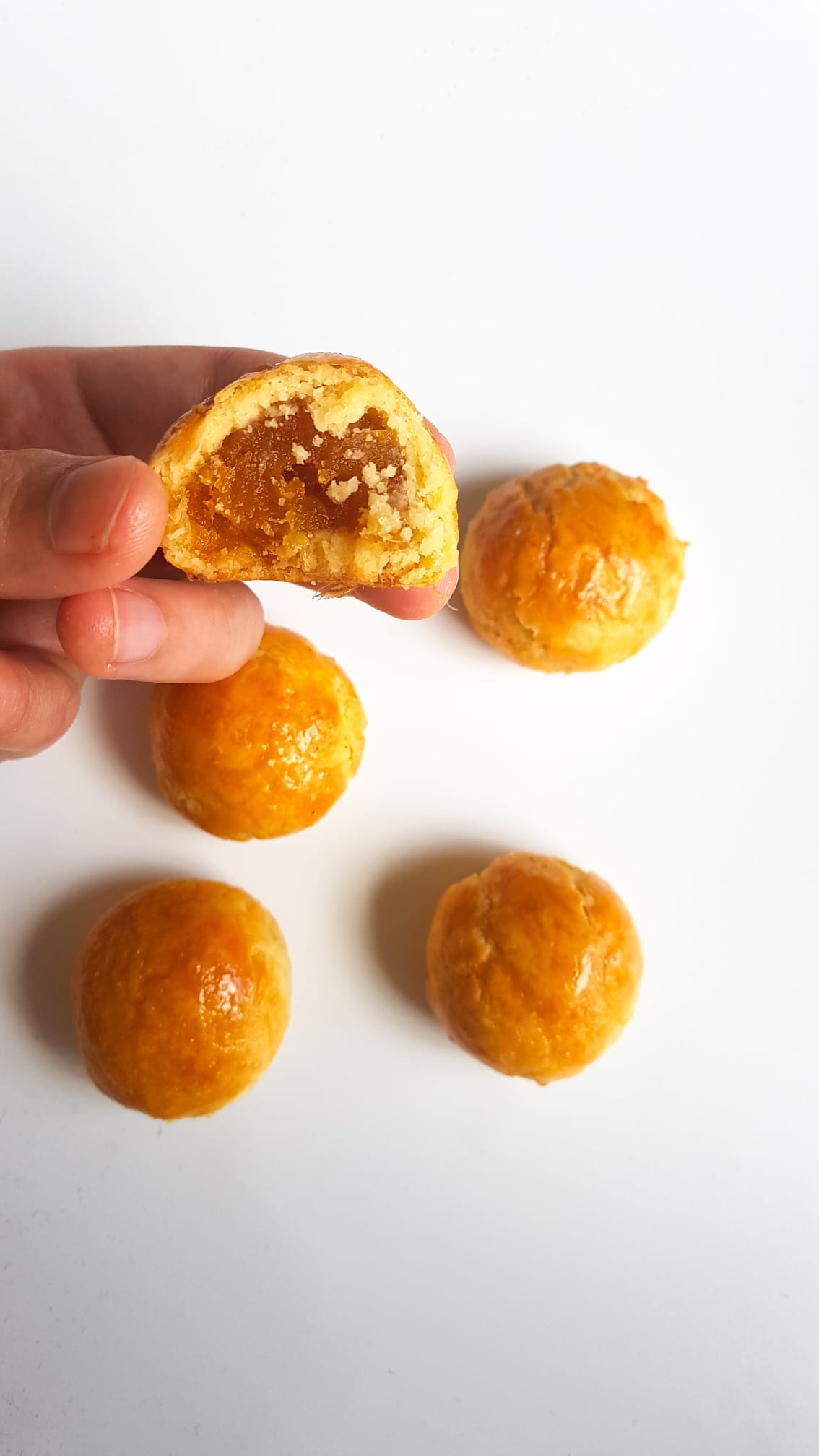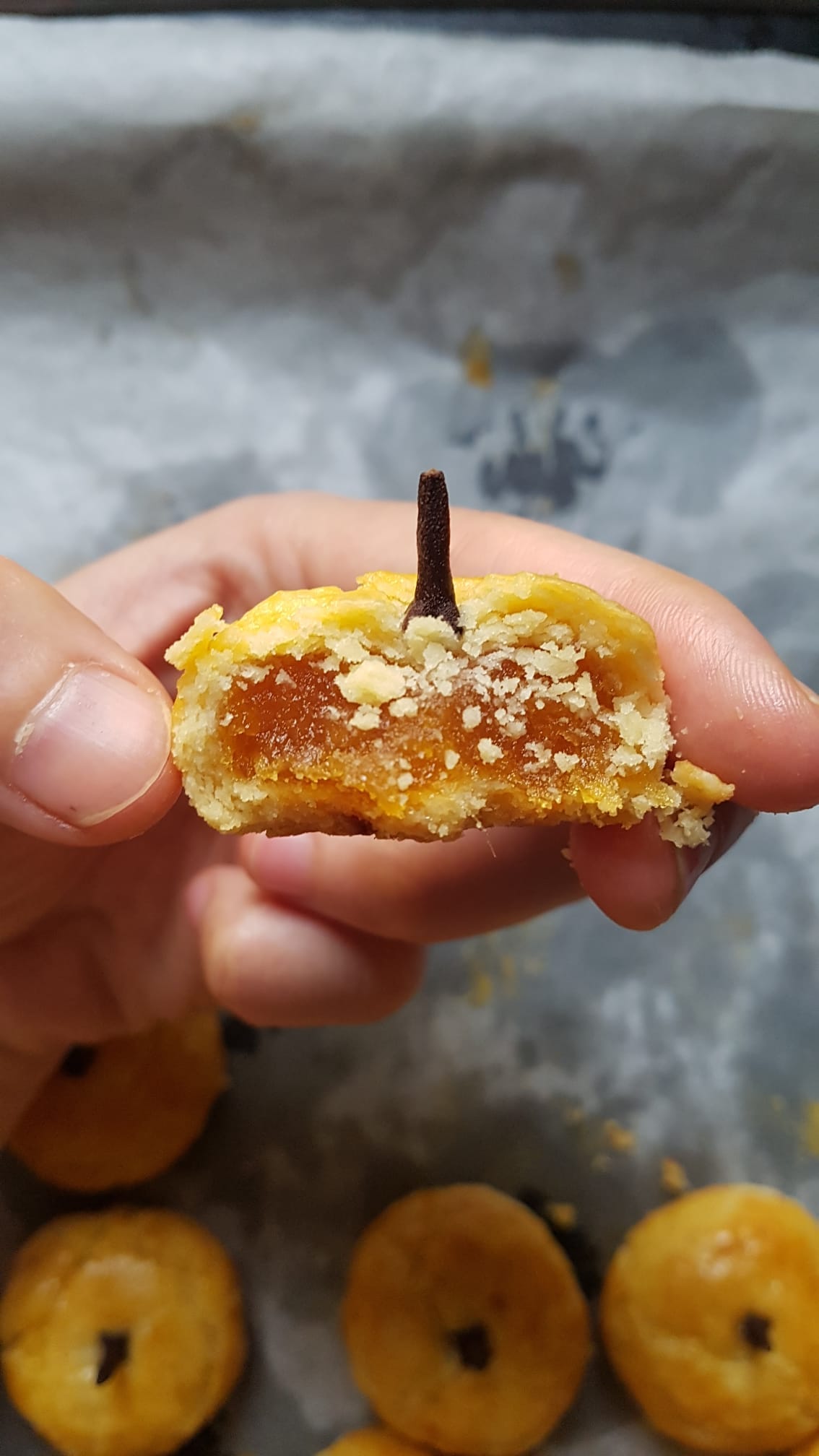Welcome back to our fourth and final installment of the pineapple tart deep-dive. If you’ve not read the past few newsletters, you can do so via the links below:
Part I: Taiwanese pineapple cakes vs Southeast Asian pineapple tarts
Part II: Pineapple jam
Part III: Pineapple tart pastry
Part IV: Baking tips and the recipe
There are two types of pineapple tarts - open and closed, the former looking like miniature tarts, and the latter with the pineapple jam completely enclosed.
Open pineapple tarts tend to be flower-shaped, with or without a lattice on top (read the very first part of this series for more on this). They can also be shaped as cylindrical rolls with two exposed ends. As for the closed pineapple tarts, they can be round (below) or oblong.
Because I live overseas and have limited access to special equipment or cutters, I like to make pineapple tarts that look like little oranges by forming them into squat rounds, and pressing a clove into each.
Whichever way you choose to shape your pineapple tarts, the dough should be at room temperature. Freshly made dough is ideal, but if you have made dough and chilled it in advance, leave it out of the fridge for an hour or two to bring it back to room temperature. (Chilled dough would be rock hard!) The jam should be chilled to make it easier to wrap, but room temperature works as well.
Then comes the egg-washing and baking. For closed pineapple tarts which have a thin layer of pastry to a large amount of jam (my preference), cracks are inevitable. This is because of the jam expanding as the tarts bake, and the pastry being unable to contain the expanded jam. The crack lines will become less conspicuous as the tarts cool.
If you mind the appearance, there are some tips and tricks you can employ. First, simply reduce the amount of jam or increase the amount of pastry in each tart. Otherwise, you can experiment with lowering the temperature of your oven so that the jam does not expand that much.
Another trick is to eggwash your pastries twice - before and towards the end of baking. Eggwashing baked pastry is a mooncake-making technique - it covers up any tiny cracks that may have formed and produces an even, shiny, and lacquered appearance because the egg sets the minute it encounters the hot pastry. I like performing the second eggwash when the pastry is fully set (if not it is far too delicate), then return the cookies to the oven for a few more minutes at a higher temperature to brown the egg. In the photo below, the top 6 tarts only had a single eggwash before they went into the oven, while the bottom 6 tarts are eggwashed a second time (pictured before they went back into the oven.
Here’s what the bottom 6 look like after being baked - almost lacquered in appearance and more auspicious-looking 😝
After baking, the pineapple tarts are extremely fragile. Allow to cool completely before storing in airtight containers. I personally feel that pineapple tarts are best at least a day after they are baked; the flavours and textures meld more harmoniously together. Airtight, they keep for 2 weeks; some bakers also seal the containers with tape for longer storage.
I hope you’ve enjoyed reading this pineapple tart series, and that you feel confident enough to give it a go this Chinese New Year! Looking forward to seeing your photos of your pineapple tarts! Happy baking 🧡








